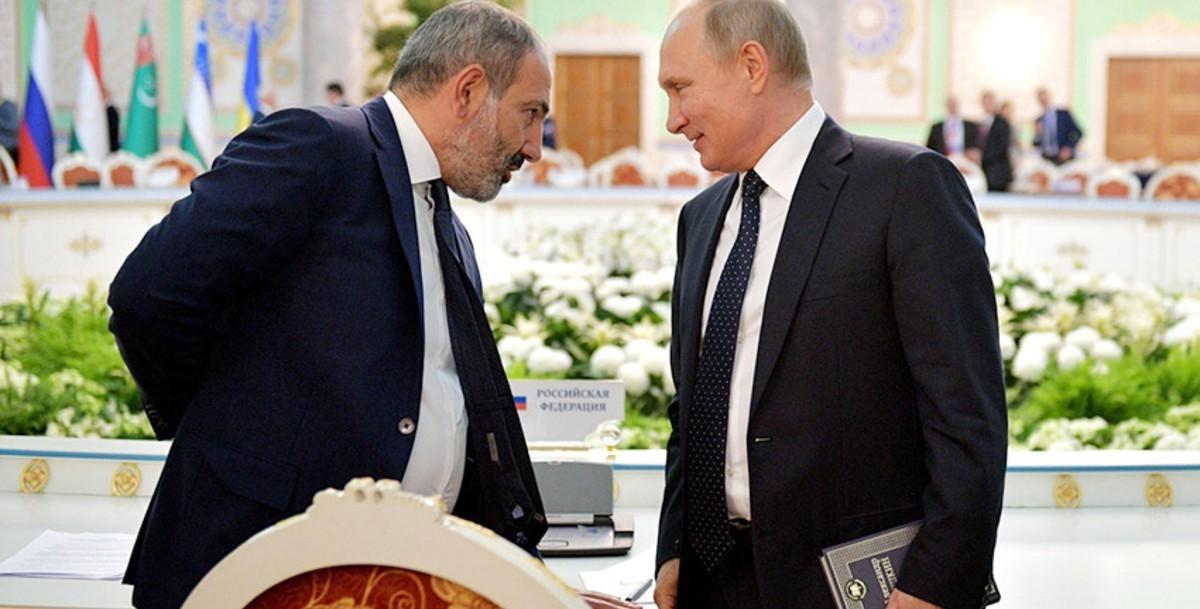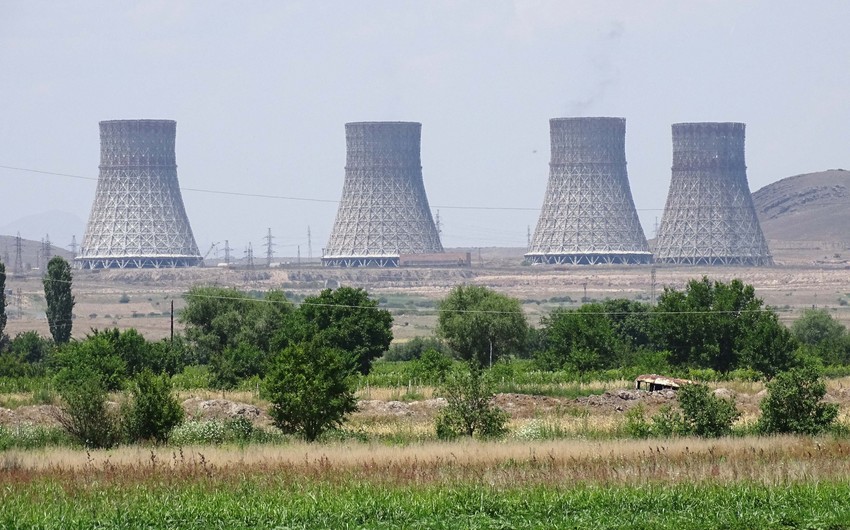Armenia is expected to be tested in the energy field in autumn
Armenia has been a source of a threat since its establishment. In other words, this state has always represented the interests outside the region, worked for those interests. Current Armenia was established thanks to Azerbaijan's territory. Unsatisfied with this, Armenians keep Azerbaijani lands under occupation, make claims on yet other neighbors' territories. So, it threatens security in the region, prevents constant stability and development. Riots in the country, terrorizing the state officials in the Parliament, taking police officers hostage, and other factors show that it is a real source of threat.
Armenia is a source of disaster for ecological security in the region. Metsamor Nuclear Power Plant can cause a Chernobyl tragedy in the area. Armenia's refusing allocation of $270 million by Russia led to the attraction of the attention to this Plant again.
Suren Papikyan, Minister of Territorial Administration and Infrastructures, said at the Parliament that the Armenian government refused Russian credit, and the works at the Plant will be completed at the expense of the state budget: "We have already conducted sufficient large-scale works. However, there is a delay in the realization of modernization program because of some objective and subjective." According to him, Armenia did not agree with Russia on the extension of the loan repayment period: "Remaining works will be financed for Armenia's account. The contract with the general contractor on modernization "Rusatom Servis" remained in force." The minister noted that in late 2019 there was an agreement to extend the loan repayment period until the end of 2020. By the way, there was an agreement to repay the loan within 15 years, which was allocated by Russia. Armenian PM Nikol Pashinyan had underlined that negotiations were underway to extend the period for one more year.

So, turbines with generators were replaced during the maintenance works, which started in 2018. In the next year, there was a plan to reinforce the metal walls of the reactor. As a result of the repair works, the Metsamor NPP's service life was to be extended until 2026. Nearly 15% of the loan was spent on repairing systems to store radioactive wastes and spent nuclear fuel. According to Suren Papikyan, the operational life of the energy block of the Plant will be extended until 2026 after maintenance works, but it will be exploitable until 2036. Head of the modernization project from the Russian side Yuri Sviridenko said in February that the issue on the use of $270 million-loan had not been solved: "Key works are planned for 2021. The budget is being discussed. No final decision was made. $200 million has already been over the past years." In 2014, Russia and Armenia signed an intergovernmental agreement on the extension of the life utility of the NPP until 2026. In February 2015, a deal was reached on an assignment of $270 state loan and $30 million.
In meanwhile, the exploitation of the Plant came to light after the collapse of the USSR. The first power block of the NPP was put into operation in 1976, the second – in 1980. Although the construction of the 3rd and the 4th power blocks commenced in 1983, the process was suspended after the Chernobyl disaster in 1986.
Due to a severe crisis that Armenia faced, a decision was made to re-operate the NPP in 1993, and the second power block was put into use two years later. Currently, only the second power block is operating. The country entrusted the NPP to Russia's Inter RAO company because of Armenia's $53 million debt to Russia over uranium fuel. Armenia started to run the Plant in 2012.
There is also a problem with the transportation of radioactive wastes. As the amount of wastes is too much, its withdrawal from the country's territory and transport to Russia remains the main issue. Transportation of the wastes via a plane is impossible. And it is unavailable to transport them through Georgia due to some reasons, either. Therefore, the wastes are stored in wells with unknown quality in the country, and this is dangerous for regional countries. The NPP is located 17.5 km from the Turkish border, 60 km from the Iranian border, and 75 km from the Azerbaijani border. The Plant meets about 40% of the energy demand of Armenia. However, the threat of the Plant for the regional countries has not reduced. In case of a lack of finance, the Plant is supposed not to be exploited safely.
Traces of Chernobyl had come up to South and North Caucasus. If we take into account that the Metsamor is located in the Caucasus, the scale of its danger is unthinkable. The supposition of Metsamor's threat to the world is increasing as it is near Turkey and Iran. It also means radiation in the Middle East. This region beware of Iran's nuclear threat as international transparency has not been provided fully. The Islamic Republic is more powerful in this field and from the viewpoint of economy and finance than Armenia.
However, the international community still does not rely on Iran's nuclear field. There are suspicious points in this regard. The problem of transportation of radioactive wastes has not been solved yet in this country. International inspectors have not inspected the wells, where the wastes are stored. The international community, including the US, is indifferent to the closure of Metsamor Plant, which has become a source of threat for the region and the world. The responsibility of danger to people and the environment around the Metsamor Plant because of meeting Armenia's energy demand falls upon the international community.
A few years ago, the Plant was on the list of the meeting chaired by Eric Rubin, US Deputy Assistant Secretary of State for European and Eurasian Affairs. Armenia signed a document to stop the operation of the Plant. Energy Minister Armen Movsisyan and US Ambassador to Armenia John Heffern signed the paper. The ambassador said that the US shared the EU's view on the Plant's closure until 2016. So, Armenia does not fulfill its obligation on the NPP, as in other fields. Otherwise, the Plant would not have been operating for four years without control.
We want to consider the political issue on the NPP. Armenia and Russia have had many disagreements on the economic fields over the past years. Most of them are related to the energy supply of Armenia. Russia is a key gas supplier of Armenia. In 2019, Russia raised the price from $150 to $165 for every 1,000 cubic meters. Moscow had an intention to increase the price to $200. Despite the negotiations between the sides, Russia keeps this price as a tool of pressure on the Armenian government. Although Yerevan wants Iran to be an alternative to Russia in this regard, Tehran has not yet agreed on the price. However, it is not believable that Iran neglects Russia because of Armenia.
There is another pressure on Nikol Pashinyan's government that Russia does not make any concession in connection with a $270 million loan. It is not such a high figure for Russia. However, Armenia is incapable of repaying that amount. Moscow creates problems mainly with Armenia's energy supply in this regard. Russia says it intends to raise the natural gas price. However, it doesn't want to extend the loan repayment period. Even though Armenia simulates cautiously, it may face problems in energy carries in the future. That may cause an additional challenge for Nikol Pashinyan's government, which is oscillating between the US and EU, and Russia and is sharing an unclear position.
Thus, Armenia is expected to be tested in the energy field in autumn, which cannot be passed through anyone's "support." Moreover, only those who are dignified can live without damaging neighbors.


